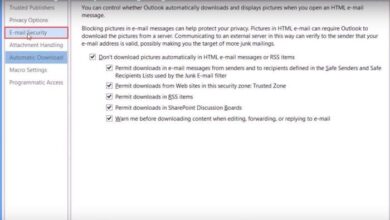Spam Proliferation Continues Despite Federal Law
Spam proliferation continues despite federal law, highlighting the ongoing struggle to combat this pervasive digital problem. From phishing scams targeting personal information to unwanted emails flooding inboxes, spam takes many forms. This article delves into the various facets of this issue, examining the evolution of spam tactics, the limitations of existing laws, and the potential technological solutions that could help.
It also looks at the damaging impact spam has on individuals, businesses, and society as a whole.
The article will discuss the specific methods used in different types of spam, like phishing and malware. It will examine the effectiveness of current federal laws and regulations, and the significant challenges in their enforcement. The article will also explore technological solutions for spam detection, including the use of artificial intelligence and machine learning, as well as the inherent limitations of these solutions.
Finally, it will analyze the far-reaching consequences of spam proliferation, from economic losses to the erosion of trust in online transactions, and will offer potential solutions and strategies to combat this persistent issue.
Defining Spam Proliferation
Spam proliferation, a persistent and evolving threat, plagues digital communication channels. It manifests in various insidious forms, from deceptive phishing attempts to malicious malware installations, and encompasses a broad spectrum of unwanted emails. Understanding its multifaceted nature and the ever-changing tactics employed by spammers is crucial for effective defense. This exploration delves into the core definition of spam proliferation, its historical evolution, and the impact of technology on both its perpetuation and mitigation.
Evolution of Spam Tactics
Spam tactics have undergone significant transformations over time. Early spam often relied on simple, broadcast-style emails, targeting large user bases with generic promotional messages. However, sophistication has increased dramatically. Today’s spammers utilize intricate techniques to bypass filters, personalize messages to increase engagement, and employ advanced social engineering tactics to trick recipients. The use of automation and botnets has enabled the rapid proliferation of spam, allowing for massive scale attacks in short periods.
This trend is likely to continue as technology advances.
Impact of Technological Advancements
Technological advancements have created a double-edged sword in the fight against spam proliferation. On one hand, advanced algorithms and machine learning models have been instrumental in improving spam filtering techniques. These systems can now analyze vast amounts of data to identify patterns and characteristics associated with spam, allowing for more effective identification and blocking. On the other hand, the very same advancements that empower these filtering mechanisms also enable spammers to create more sophisticated and personalized messages, rendering traditional methods less effective.
The arms race between spammers and anti-spam technologies continues unabated.
Characteristics of Different Spam Types
Understanding the specific characteristics of different types of spam is critical for effective defense. This table Artikels key features of phishing, malware, and unwanted email.
| Spam Type | Description | Methods | Impact |
|---|---|---|---|
| Phishing | A deceptive practice that attempts to trick users into revealing sensitive information, such as passwords, credit card details, or personal data, by masquerading as a legitimate entity. | Typically involves spoofed emails, websites, or messages that mimic trusted organizations. Sophisticated phishing attacks may use social engineering tactics, exploiting psychological vulnerabilities. | Financial losses, identity theft, and data breaches. |
| Malware | Malicious software designed to infiltrate and damage a system or steal sensitive data. | Malware can be distributed through various channels, including infected email attachments, malicious websites, and compromised software. It can also exploit vulnerabilities in software to gain unauthorized access. | System disruptions, data loss, financial losses, and reputational damage. |
| Unwanted Email | Unsolicited emails that often contain promotional content, advertisements, or other non-essential messages. | Typically delivered in bulk through automated systems. Spam filters are designed to reduce the impact of this type of spam. | Clutter and distraction, reduced productivity, and potential exposure to more sophisticated spam attempts. |
Federal Laws and Regulations
Spam proliferation, despite legal attempts to curb it, continues to be a persistent problem. Understanding the existing federal laws and regulations is crucial to evaluating their effectiveness and identifying potential areas for improvement. This section examines key legislation and their specific provisions, considering their historical context and overall impact.Existing federal laws, while intended to combat spam, often face challenges in keeping pace with evolving technological advancements.
The dynamic nature of the internet and the constant development of new communication methods necessitate ongoing adjustments and improvements to existing legal frameworks.
Key Federal Laws Addressing Spam
Various federal laws and regulations contribute to the legal framework surrounding spam. These laws aim to protect consumers from unwanted commercial communications, and their efficacy is an ongoing topic of debate.
- The CAN-SPAM Act: The Controlling the Assault of Non-Solicited Pornography and Marketing Act of 2003 (CAN-SPAM Act) is a significant piece of legislation. It establishes rules for commercial emails, requiring clear labeling of commercial messages and providing recipients with an easy way to opt-out of future messages. The Act’s key provisions focus on the sender’s identity, message content, and opt-out mechanisms.
This act was enacted in response to the rapidly increasing volume of unsolicited commercial emails overwhelming consumers and businesses alike.
Specific Provisions and Historical Context
The CAN-SPAM Act, while a crucial step, has faced criticism regarding its effectiveness in preventing all spam. The Act’s provisions cover various aspects of commercial email marketing. One notable provision is the requirement for clear labeling of commercial messages. The Act defines commercial email as any message primarily intended to promote or advertise a commercial product or service.
It also specifies the requirement for a clear opt-out mechanism.
- Electronic Communications Privacy Act (ECPA): The Electronic Communications Privacy Act (ECPA) of 1986 plays a role in regulating the use of electronic communications, including email. While not solely focused on spam, ECPA provisions, such as those related to wiretapping and interception, can be relevant in certain spam-related legal battles. The historical context of ECPA’s creation reflects the growing concern about privacy in the early stages of the internet.
Its provisions, while not directly aimed at spam, can be leveraged in cases where spam activities violate privacy rights.
Comparative Analysis of Federal Laws
The effectiveness of these laws in addressing spam proliferation varies, highlighting the need for a multi-faceted approach to combatting the problem. The table below compares and contrasts the different federal laws based on scope and enforcement mechanisms.
| Law | Scope | Enforcement | Effectiveness |
|---|---|---|---|
| CAN-SPAM Act | Primarily focused on commercial email messages, requiring sender identification, clear opt-out mechanisms, and accurate content descriptions. | Enforcement relies on the Federal Trade Commission (FTC) and potential lawsuits. | Considered somewhat effective in reducing certain types of spam, but not a complete solution due to the ever-evolving nature of spam techniques. |
| ECPA | Broader scope, addressing electronic communications generally, including wiretapping and interception. Relevant in cases involving spam and privacy violations. | Enforcement mechanisms are varied and may involve the FBI or other federal agencies. | Effectiveness in directly addressing spam is less direct, but it can be used to support claims in spam-related lawsuits. |
Challenges in Enforcing Anti-Spam Laws

Spam proliferation continues to be a persistent problem, despite the existence of federal laws aimed at curbing it. The effectiveness of these laws, however, is often hampered by a range of practical challenges. These difficulties stem from the very nature of spam, which is often global and anonymous, making it hard to identify and prosecute perpetrators. Adapting legal frameworks to keep pace with evolving spam tactics is also a significant hurdle.The complexity of the digital landscape poses considerable obstacles to law enforcement agencies tasked with combating spam.
The anonymity afforded by the internet and the rapid evolution of spam techniques create a constant game of catch-up. Effectively tracking down perpetrators, locating servers, and proving intent in the digital realm presents significant legal and logistical challenges.
Obstacles Faced by Law Enforcement Agencies
Law enforcement agencies face numerous obstacles in combating spam. These obstacles include the difficulty in identifying and tracking down perpetrators, the sheer volume of spam messages, and the often-sophisticated techniques used by spammers. Jurisdictional issues further complicate matters, particularly when spam originates in one country and targets recipients in another. This requires international cooperation and a unified approach to combating cross-border spam.
Challenges in Tracking Down Perpetrators
The anonymity of the internet allows spammers to hide their identities and locations. This makes it difficult to identify and hold them accountable for their actions. Tracing the origin of spam messages can be complex, often involving intricate analysis of IP addresses and server logs. The sheer volume of spam messages also poses a significant challenge, as law enforcement agencies must prioritize their investigations and allocate resources effectively.
Further, the use of proxy servers and other techniques to mask their identities adds another layer of complexity.
Adapting Existing Laws to New Spam Tactics
Spammers are constantly developing new techniques to circumvent existing laws. This necessitates a continuous adaptation of legal frameworks to address emerging tactics. For instance, the use of social engineering techniques to deceive recipients and the employment of sophisticated malware in spam emails require updates to laws and regulations. The speed of technological advancements necessitates continuous vigilance and proactive measures from lawmakers and law enforcement agencies.
It’s frustrating how spam proliferation continues despite federal laws. Apparently, the ongoing denial-of-service attacks, like the recent one targeting SCO sco hit with another denial of service attack , highlight the vulnerabilities in the digital infrastructure. This makes it even harder to fight the constant barrage of unwanted emails and messages, which ultimately undermines the effectiveness of those laws.
Role of International Cooperation
Combating cross-border spam requires significant international cooperation. Different jurisdictions have different laws and enforcement mechanisms. Collaboration between law enforcement agencies in various countries is crucial for effectively tracking and prosecuting spammers operating across borders. International agreements and treaties are vital to harmonize legal frameworks and ensure consistent enforcement efforts.
Table of Challenges in Enforcing Anti-Spam Laws
| Challenge | Description | Possible Solutions |
|---|---|---|
| Identifying Perpetrators | Difficulty in tracing the origin and identity of spammers due to anonymity and use of proxy servers. | Improving data analysis techniques, utilizing advanced forensic tools, and strengthening international cooperation to share information. |
| Volume of Spam | Overwhelming volume of spam messages makes prioritizing investigations and allocating resources challenging. | Employing automated filtering systems, using machine learning to identify patterns, and improving resource allocation strategies. |
| Evolving Spam Tactics | Spammers constantly develop new techniques to bypass existing laws, requiring adaptation of legal frameworks. | Regularly reviewing and updating anti-spam laws, collaborating with technology experts to identify emerging threats, and enacting proactive measures. |
| Jurisdictional Issues | Difficulties in determining jurisdiction when spam originates in one country and targets recipients in another. | Strengthening international cooperation through treaties and agreements to establish clear guidelines for cross-border enforcement. |
Technological Solutions to Spam: Spam Proliferation Continues Despite Federal Law

Spam, despite legal efforts, persists. This necessitates robust technological countermeasures. Effective spam filtering relies on a combination of techniques, from simple filters to sophisticated AI algorithms. This section explores the various technological approaches used to detect and filter spam, examining their strengths and limitations.The fight against spam has evolved from simple -based filters to complex machine learning models.
Modern methods are constantly being refined to adapt to the ever-changing tactics of spammers. Understanding these techniques is crucial for comprehending the ongoing battle against unsolicited messages.
Spam Filtering Techniques
Various methods are used to identify and block spam messages. These methods vary in their complexity and effectiveness.
Spam proliferation continues to plague the internet, despite existing federal laws. This frustrating reality raises questions about the effectiveness of current regulations. Perhaps innovative solutions like the platform internet, specifically the promise of grid computing, platform internet the promise of grid computing , could offer a more robust defense against spam. However, even with these advancements, the ongoing struggle against spam proliferation remains a significant challenge.
- Blacklists and Whitelists: This is a foundational technique. Blacklists maintain a database of known spam senders. Emails from these senders are automatically blocked. Whitelists, conversely, allow emails from trusted senders to bypass filtering, improving the inbox experience for legitimate communication.
- Content-Based Filtering: This approach analyzes the content of an email for s, phrases, or patterns associated with spam. Sophisticated methods look for combinations of factors, not just single words. This includes examining the email’s subject line, sender address, and the message body itself.
- Header Analysis: Spammers often use spoofed or forged headers. By analyzing the email headers, filters can identify potentially fraudulent messages, which may contain inconsistencies or suspicious information.
- Bayesian Filters: These filters learn from a user’s email habits. They classify incoming messages as spam or not spam based on the user’s previous interactions. The more data they receive, the more accurate their predictions become.
Artificial Intelligence and Machine Learning in Spam Detection
AI and machine learning are revolutionizing spam filtering. These advanced technologies allow for a more sophisticated and adaptive approach to spam detection.
- Neural Networks: Complex neural networks can analyze massive datasets of spam and legitimate emails to identify subtle patterns that humans might miss. This enables a much more effective spam detection system.
- Deep Learning: A more advanced form of machine learning, deep learning algorithms can process intricate email features and recognize subtle characteristics that distinguish spam from legitimate messages. This method excels in identifying highly sophisticated spam campaigns.
- Natural Language Processing (NLP): NLP allows systems to understand the meaning and context of the language used in emails. This is crucial for identifying spam that uses deceptive language or tries to mimic legitimate communications. NLP is used to analyze the language of the email and identify suspicious or unusual patterns.
Limitations of Current Technological Solutions
Despite advancements, technological solutions face limitations.
- Evasion Techniques: Spammers constantly develop new techniques to circumvent filters. They use obfuscation techniques, such as encoding s or using different email addresses. The constant evolution of spam tactics necessitates continuous updates and improvements to filtering systems.
- False Positives: Filters sometimes incorrectly classify legitimate emails as spam, leading to users losing important messages. This problem is more significant in complex filtering methods.
- Computational Resources: Advanced AI and machine learning methods require substantial computational power. This is often a barrier for smaller organizations or individuals with limited resources.
Effectiveness of Different Technological Approaches
Comparing the effectiveness of different approaches is challenging. There is no single perfect solution.
Spam proliferation continues to plague our inboxes, even with federal laws in place. It’s a frustrating issue, but perhaps a look at the passionate communities behind open-source projects like Linux, with their “pros priests and zealots” – as explored in this fascinating article about pros priests and zealots the three faces of linux – might offer some insight into why some things are so stubbornly persistent, even against legislative efforts.
Ultimately, the persistence of spam, despite the laws, remains a challenge.
- Simple filters are effective against basic spam, but are easily circumvented by sophisticated spammers.
- Advanced techniques such as AI and machine learning can identify more sophisticated spam attempts, but are more resource-intensive and can produce false positives.
“A robust spam filtering system should combine multiple techniques, including content analysis, header analysis, and AI-powered learning. It should also adapt to new spam tactics and minimize false positives.”
Impact of Spam Proliferation
Spam, the unsolicited bulk email plague, extends far beyond a mere nuisance. Its pervasive nature creates a cascade of negative impacts, affecting individuals, businesses, and society as a whole. From financial losses to eroded trust in online interactions, the consequences of spam are substantial and multifaceted. This section delves into the detrimental effects of spam proliferation, examining its economic, social, and security ramifications.The economic repercussions of spam are significant and far-reaching.
Spam often involves significant resources, and the costs associated with its creation and distribution are substantial. These costs, however, are not solely borne by the spammers themselves. Businesses and individuals must allocate resources to filter, block, and manage the deluge of unwanted emails, impacting productivity and efficiency. Furthermore, spam can lead to lost revenue for legitimate businesses, as it can divert attention from valuable customer interactions and potentially damage brand reputation.
Economic Impact of Spam, Spam proliferation continues despite federal law
Spam generates substantial economic costs. These costs include the direct expenses associated with spam filters, anti-spam software, and the time spent by individuals and businesses dealing with unwanted emails. The costs also extend to the operational expenses of network infrastructure used to transmit spam. Furthermore, spam often targets businesses, causing them to lose revenue due to wasted resources and decreased productivity.
The overall cost of spam is a significant drain on global resources, impacting economic growth and efficiency. Companies must allocate significant resources to combat spam, reducing their capacity to invest in other areas.
Social and Psychological Consequences of Spam
Spam’s ubiquity creates a significant social and psychological burden. The constant barrage of unwanted emails can lead to frustration, stress, and decreased productivity. The intrusion of spam into personal inboxes can be intrusive and unwelcome, impacting mental well-being. Moreover, the sheer volume of spam can overwhelm email systems, making it difficult to access and manage important communications.
The pervasive nature of spam undermines the trust and reliability of online communication channels, impacting the user experience and eroding confidence in online interactions.
Effect of Spam on Businesses and Consumers
Spam poses significant threats to both businesses and consumers. Businesses often face disruptions in operations due to the constant influx of spam, diverting resources and attention from legitimate tasks. Spam can also lead to reputational damage, as it often accompanies malicious activities or fraudulent schemes. For consumers, spam can lead to the loss of personal information, including credit card details or account credentials.
The disruption and frustration caused by spam can damage the user experience, potentially driving customers away from businesses and platforms.
Impact of Spam on Security of Online Transactions
Spam often acts as a cover for malicious activities, posing a significant security risk to online transactions. Spam emails frequently contain links to malicious websites designed to steal sensitive information or spread malware. Such activities can lead to financial losses and the compromise of personal data. The anonymity and volume of spam make it difficult to trace the source and perpetrators of these attacks, making it a persistent security concern for both individuals and businesses.
Impact of Spam on Individuals, Businesses, and Society
| Impact | Description | Examples |
|---|---|---|
| Economic | Spam incurs significant costs for businesses and individuals due to filtering, blocking, and wasted resources. This includes the cost of anti-spam software, the time spent managing spam, and lost productivity. | A small business may spend hundreds of dollars annually on anti-spam software and dedicated personnel to manage spam emails. An individual user might lose hours of productivity dealing with spam emails. |
| Social | Spam can lead to stress, frustration, and decreased productivity due to the constant barrage of unwanted emails. The prevalence of spam can erode trust in online communication channels. | A constant influx of spam emails can lead to stress and decreased productivity for an individual or business. The spread of phishing scams through spam emails can damage trust in online transactions. |
| Business | Spam can disrupt business operations, damage reputation, and lead to financial losses. Businesses may experience a decrease in customer engagement and potentially loss of revenue. | A business’s email server being overwhelmed by spam may lead to legitimate emails being delayed or missed, leading to missed opportunities and lost revenue. Spam associated with phishing attempts can damage the business’s reputation and lead to customer loss. |
| Consumer | Spam can lead to the compromise of personal information, including financial details. Consumers may experience frustration and annoyance due to the constant influx of unwanted emails. | Consumers may fall victim to phishing scams disguised as legitimate emails, leading to the theft of financial data. Spam emails can be annoying and disruptive, causing frustration and decreased satisfaction with online interactions. |
| Security | Spam can facilitate malicious activities, such as phishing scams and malware distribution. Spam can compromise online transactions and lead to financial losses and data breaches. | Spam emails often contain links to malicious websites that attempt to steal sensitive information or install malware on users’ computers. A user clicking on a malicious link in a spam email may lead to a data breach and financial loss. |
Potential Solutions and Strategies
Spam proliferation, despite existing federal laws, continues to be a significant challenge. Effective solutions require a multi-pronged approach encompassing technological advancements, industry cooperation, and international collaboration. A comprehensive strategy to combat spam needs to address not only the immediate problem but also the underlying incentives that drive its creation and distribution.Combating spam requires a multifaceted strategy that goes beyond simple technical fixes.
The goal is to not only block existing spam but also to discourage future spammers. This involves deterring new entrants and increasing the costs of engaging in spam activities.
Developing Strategies to Combat Spam
A robust strategy against spam needs a multifaceted approach. Prevention, detection, and response mechanisms are essential. Effective strategies include the use of advanced filtering technologies, coupled with robust legal frameworks and strong industry self-regulation. This proactive approach aims to reduce the overall volume of spam and make it less profitable for spammers.
- Improved Filtering Techniques: Advanced algorithms and machine learning models can identify and block spam with greater accuracy than traditional methods. These technologies can adapt to evolving spam techniques, significantly reducing the volume of spam reaching inboxes.
- Enhanced Authentication Mechanisms: Implementing robust authentication methods, like Sender Policy Framework (SPF) and DomainKeys Identified Mail (DKIM), helps verify the origin of emails. This reduces the likelihood of spoofing and helps recipients identify legitimate messages.
- User Education and Awareness: Educating users about spam and phishing techniques empowers them to recognize and avoid suspicious emails. This proactive measure can significantly reduce the number of victims.
The Role of Industry Self-Regulation
Industry self-regulation plays a vital role in curbing spam. Collaboration among email service providers, internet service providers, and other stakeholders can lead to more effective spam prevention strategies. This collective action is crucial for establishing and enforcing industry standards.
- Industry-Wide Standards: Developing and enforcing industry-wide standards for email authentication and spam filtering can significantly reduce spam volumes. Consistent implementation of these standards by all stakeholders fosters a more secure online environment.
- Shared Responsibility: All stakeholders have a role to play in combating spam. Email providers, internet service providers, and end-users must share responsibility in identifying and addressing spam. This collaborative approach enhances the effectiveness of spam prevention efforts.
- Incentivizing Responsible Practices: Rewarding companies and individuals for adhering to spam prevention best practices encourages proactive measures. Such incentives motivate participation and promote a safer online environment for everyone.
International Cooperation in Combating Global Spam
International cooperation is crucial in combating global spam. Different countries have varying legal frameworks and enforcement capabilities. Collaboration among international organizations and governments is essential for creating a coordinated global approach to tackling spam.
- Harmonization of Laws: Harmonizing spam laws across different countries is vital. This ensures consistent enforcement and reduces loopholes that spammers can exploit. Standardized legal frameworks are essential for a globally effective approach to spam prevention.
- Data Sharing and Information Exchange: International collaboration facilitates data sharing and information exchange. This enables the identification and tracking of spammers across borders, making it more difficult for them to operate. This coordinated approach to information sharing is vital.
- Joint Enforcement Efforts: Joint enforcement efforts across borders are essential for apprehending and prosecuting spammers. This collaborative approach significantly increases the chances of bringing spammers to justice.
Comparison of Spam Prevention Approaches
| Approach | Pros | Cons |
|---|---|---|
| Improved Filtering Techniques | Increased accuracy in identifying spam, adaptability to evolving techniques. | Potential for false positives, high computational cost. |
| Enhanced Authentication Mechanisms | Improved verification of email origin, reduced spoofing. | Complexity in implementation, potential for abuse. |
| Industry Self-Regulation | Increased collaboration, potentially faster response to evolving threats. | Potential for inconsistencies in standards, lack of enforcement mechanisms. |
| International Cooperation | Harmonization of laws, global enforcement efforts. | Complexity in coordinating efforts, varying legal frameworks. |
Final Conclusion
In conclusion, while federal laws exist to combat spam, the proliferation of this digital nuisance continues. The problem is multifaceted, involving evolving tactics, enforcement challenges, and limitations in current technology. Addressing this issue requires a multifaceted approach, encompassing stronger legal frameworks, improved technological solutions, and increased international cooperation. Ultimately, the fight against spam requires a collaborative effort between governments, industry, and individuals to create a safer and more secure digital environment.







